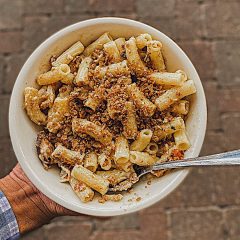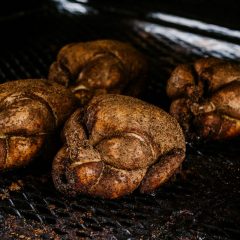
Potlikker Fish Stew at Zingerman’s Roadhouse
A big bowl of Southern comfort in this wonderful seafood stew Without a doubt, one of my favorite foods from the Roadhouse—and I get to eat a lot of good food—is the Creole Potlikker Fish Stew. We’ve been serving it for nearly a decade now, and with each passing week, I think it accumulates even […]
Read more »





Zingerman’s Art for Sale